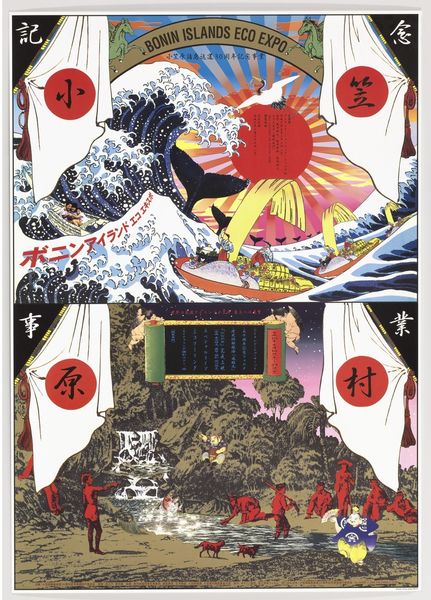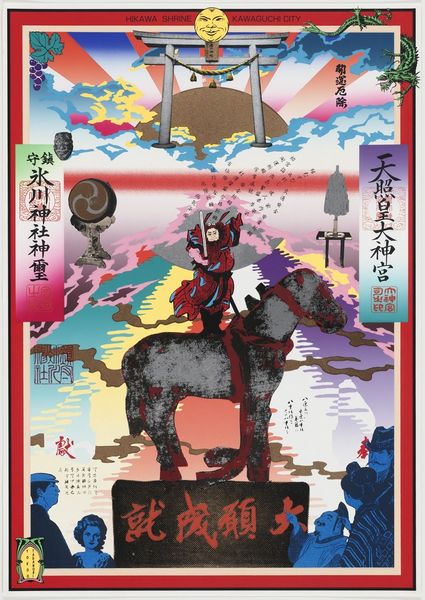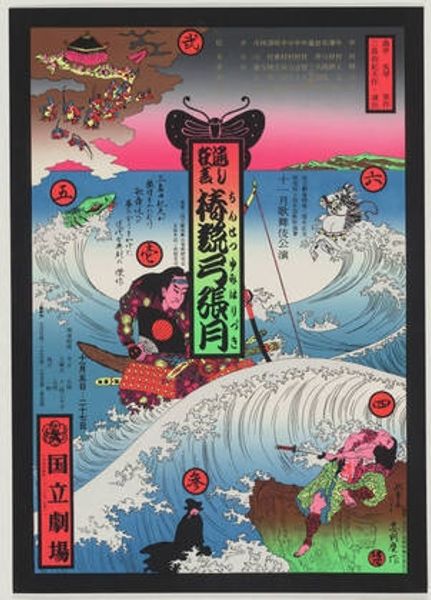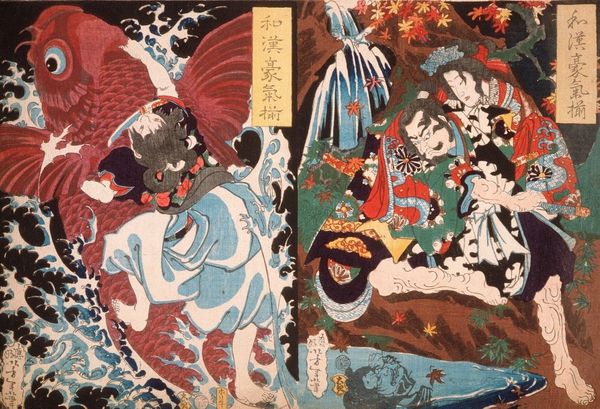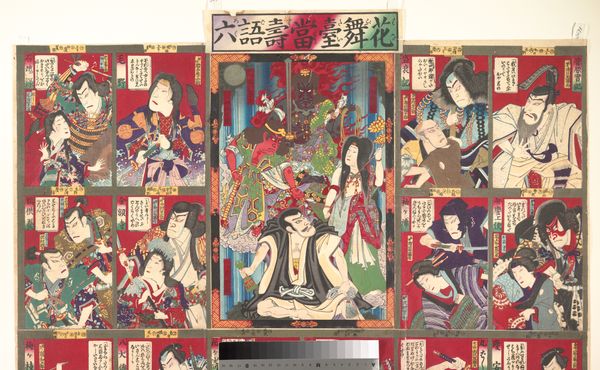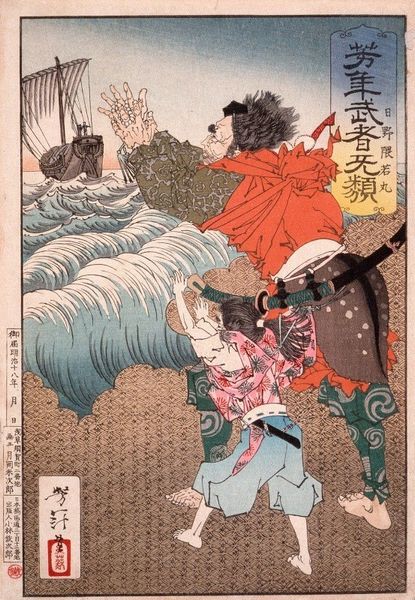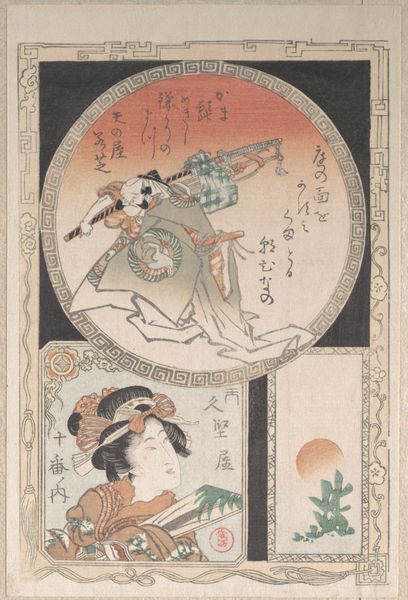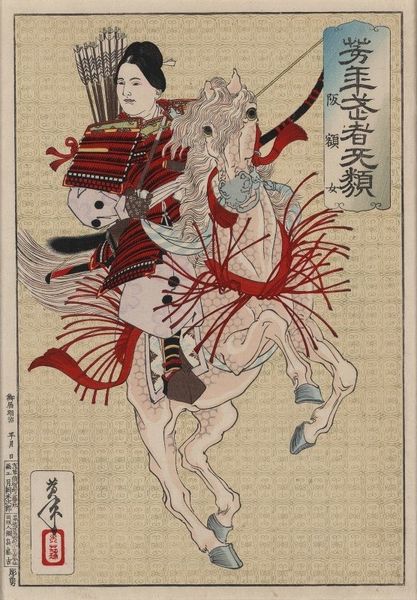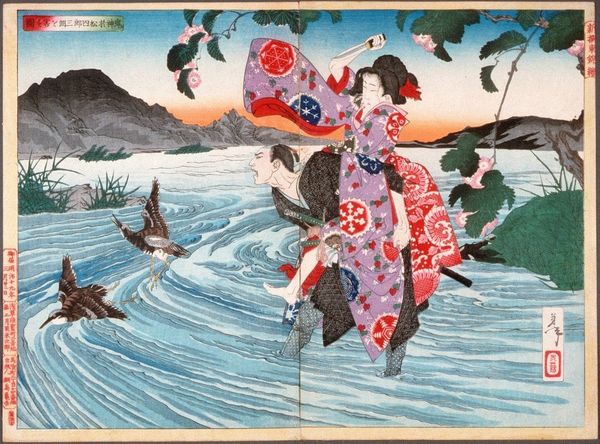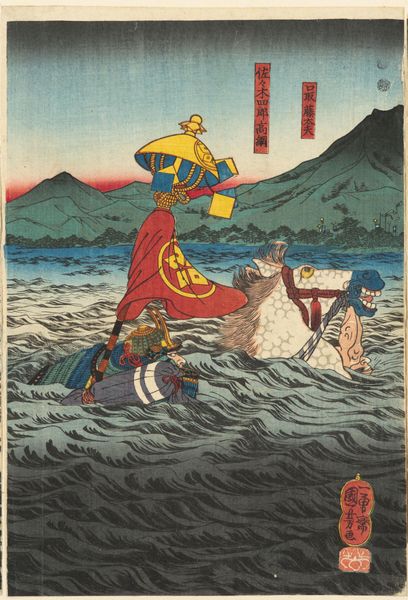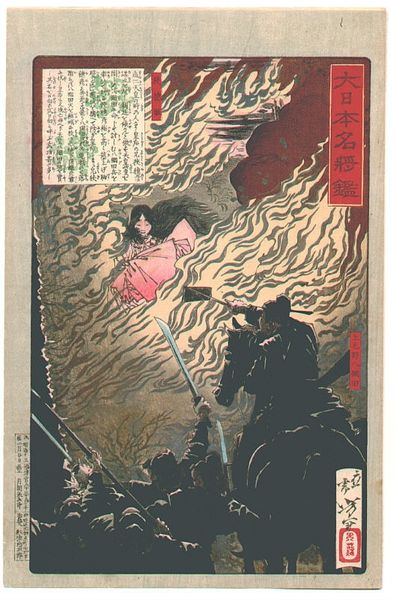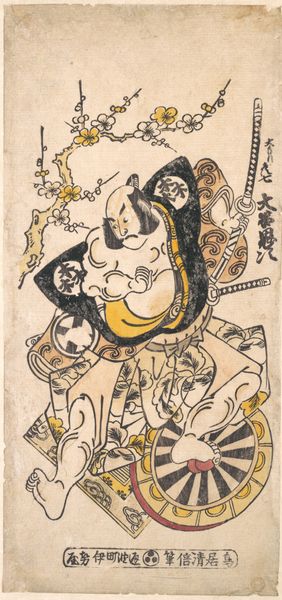
Copyright: Modern Artists: Artvee
Curator: Alright, let's dive into this piece by Tadanori Yokoo, titled "Super Kabuki," created back in 2001 using mixed media. It's quite the spectacle, isn't it? Editor: Utterly. It's a visual explosion! Chaotic, almost overwhelming at first glance, but in a way that demands your attention. What exactly are we looking at? A poster, maybe? Curator: Exactly. Think of it as a remix of Japanese visual traditions. We've got elements of ukiyo-e, kabuki theatre aesthetics, and a hefty dose of Yokoo's signature psychedelic flair. Editor: So it's collapsing centuries of Japanese cultural expression into one image. Interesting. But how does Yokoo’s use of these different styles and images speak to our time, particularly in relation to say, orientalism or even identity politics? Curator: Ah, there's the critical eye I was expecting! You're right, it does engage with the historical baggage of orientalism. Yokoo often uses these exoticized tropes but twists them, almost parodying the Western gaze while simultaneously celebrating Japanese heritage. It’s complex. Editor: It's the locomotives battling through waves at the top for me, they seem strangely disconnected, especially set against a collage that draws on much older images and ideas about Japan. Curator: Well, that may touch upon one of the ideas within the poster. In the foreground, we see figures drawn straight from Kabuki, alongside mythical creatures, merging high and low culture in a way that disrupts any clean narrative. Yokoo liked to challenge fixed identities, to suggest the self is always a performance, much like Kabuki itself. He plays with fluidity and disruption of boundaries, both visually and conceptually. Editor: So, rather than a simple celebration, it's a questioning of cultural identity itself. I keep coming back to those trains—they represent progress, industry, a Western import reshaping Japan. They give it all such an unsettled feeling. Curator: Yes, precisely! It’s a work that keeps you on your toes, forcing you to question your assumptions. It offers so much if you truly dwell within it. Editor: It is striking. This piece refuses to offer any easy answers, inviting us to engage with Japanese culture—past and present—with nuance. That makes it feel much more meaningful now.
Comments
No comments
Be the first to comment and join the conversation on the ultimate creative platform.
